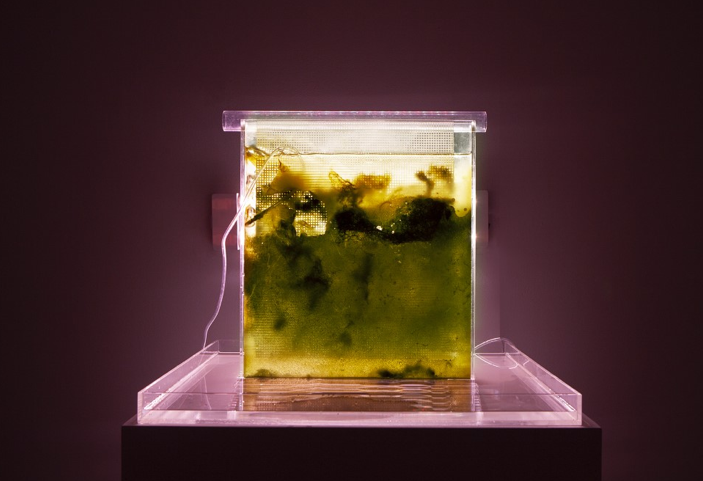When the Alliance and juror Ryan Lee Wong selected the 2020 Alumni Microgrant Program recipients last January, we did so with no knowledge of the COVID-19 pandemic and how it would upend many artists’ and writers’ practices and lives. In keeping with their creative fortitude, our microgrant recipients were able to turn unexpected obstacles into opportunities for artistic and professional growth. We caught up with them this past fall to ask how their practice has changed over the past ten months of the pandemic, and to find out how the original projects they had set out to implement might have shifted.
For at least one of our microgrant recipients, the intended project has evolved to respond to the social upheaval that defined 2020. Jakob Hochendoner, a filmmaker who used his microgrant funds to complete his documentary film, Fireboys, wrote: “The film has grown to include a community-impact campaign as we plan the 2021 release. In light of the recent fire season and the ongoing challenges faced by those impacted by the justice system, we feel that the timing for the release is ideal. I hope this project can inspire other audiences, especially young audiences, to think more broadly and empathetically about justice-involved people in the hopes to end mass incarceration.”
The pandemic completely shifted the notion of scale for alumni Cong-Tam Nguyen and Kristi Cavataro. Nguyen, who originally intended to spend their microgrant funds on the production of two neon-light pieces for a site-specific installation, wrote: “The pandemic has forced me to make smaller work, and I don’t see that as a bad thing. Before the pandemic, the majority of my work was very large, often taking the form of installations or large-scale sculptural assemblages. Now, my work is quite small, not even surpassing a few feet at the largest dimension. But that change in scale has also allowed me to really slow down and be more intentional about the images, words, and objects I create, and the materials that I use. I feel more connected to my work now, mostly because I think I can pay attention to it in a different way, and have a conversation with my work as I make something.” Works that Nguyen created for their microgrant can be viewed on their website.
For Cavataro, a sculptor who works with stained glass, the pandemic forced a re-assessment of the large-scale studio practice usually required for that type of work. She wrote: “When the shutdown first hit, I had just purchased a lot of materials and supplies with the grant funds and felt fortunate and well prepared to ride out a lockdown for several weeks while staying productive. As things progressed and it became clear that the pandemic was going to last much longer than just a few weeks, I had to adjust my expectations for my studio momentum. All the time at home in the spring was beneficial in many ways, but it came with a lot of logistical and mental obstacles to making sculpture. I was able to use the time to catch up on many things that supplement my sculpture practice but often get deprioritized—like drawing, reading, and writing.”

The pandemic, for Siri Lee and Arden Surdam, made the intended physical spaces for their work obsolete. For Surdam, one exhibition planned for the spring was canceled, though she was later able to participate in a group show at Metro Pictures curated by Kendra Jayne Patrick. Lee took her work from the physical page to the webpage. Her microgrant was used to print a run of her artist book, ZÀO: A History of Chinese Dishcourse Through Famine and Revolution. Unfortunately, the public debut of the book was slated for an art and technology festival on March 12, the day New York City first went into a full pandemic lockdown. Furthermore, the distribution plan for the book through public libraries was scuttled by pandemic closures. Instead, the festival and her book went online. You can read ZÀO here.
The microgrant also functioned as a much-needed additional stimulus check for some alumni. Several redistributed their microgrant funds to pay for critical needs such as rent, living costs, and holding on to studio spaces that would otherwise be an unaffordable expense for those building an artistic career.
Though 2020 proved to be an unexpected and challenging year, our Alumni Microgrant recipients’ experiences remind us of the power of creative thinking and flexibility. While the world shut down, artists did the opposite, expanding their practices in response. In support of the resilience of our artists, the Alliance is now accepting applications for our 2021 Alumni Microgrant Program, made possible by the Maurice R. Robinson Fund and the Andrew W. Mellon Foundation. Acknowledging the unique needs of our time, the program has been expanded to grant ten Awards alumni $1,000 each to fund their creative endeavors. In addition, for the first time ever, we’re offering five $1,000 grants specifically to alumni of the National Student Poets Program. Though the future remains uncertain, our belief in our alumni only grows stronger; we can’t wait to see what they’ll create next.
To read more about our 2021 Alumni Microgrant Program and to apply, visit our Submittable portal.
Artwork credits:
Featured image: Untitled 44.5″ x 41″ x 13″ Stained Glass 2020, a work created this past summer by Kristi Cavataro.
Scrubber (Bioreactor III), 2020 (installation view, Week 14). Spirogyra, Acrylic, Flex Line Tubing, Tesler Hydroponic LEDs, Air Pump 6 x 14 x 16 inches || 15 x 36 x 41 centimeters. This sculptural installation by Arden Surdam was included in a group show at Metro Pictures, New York, NY.
